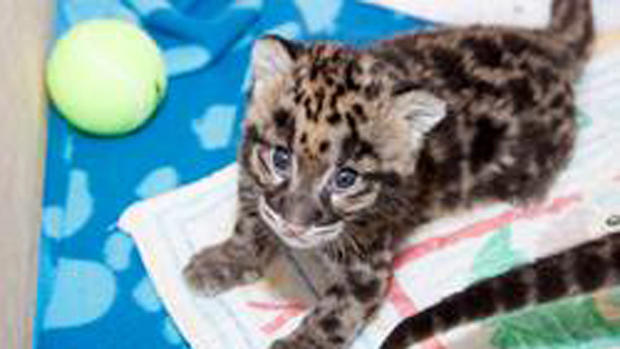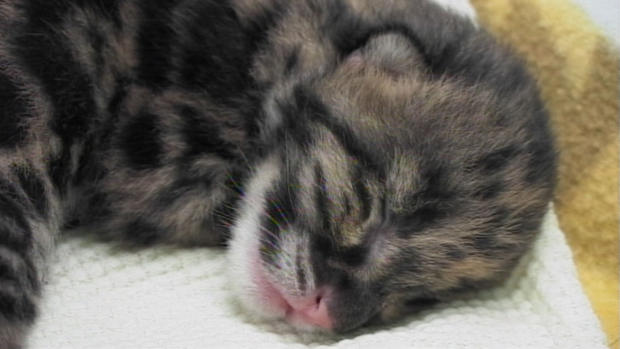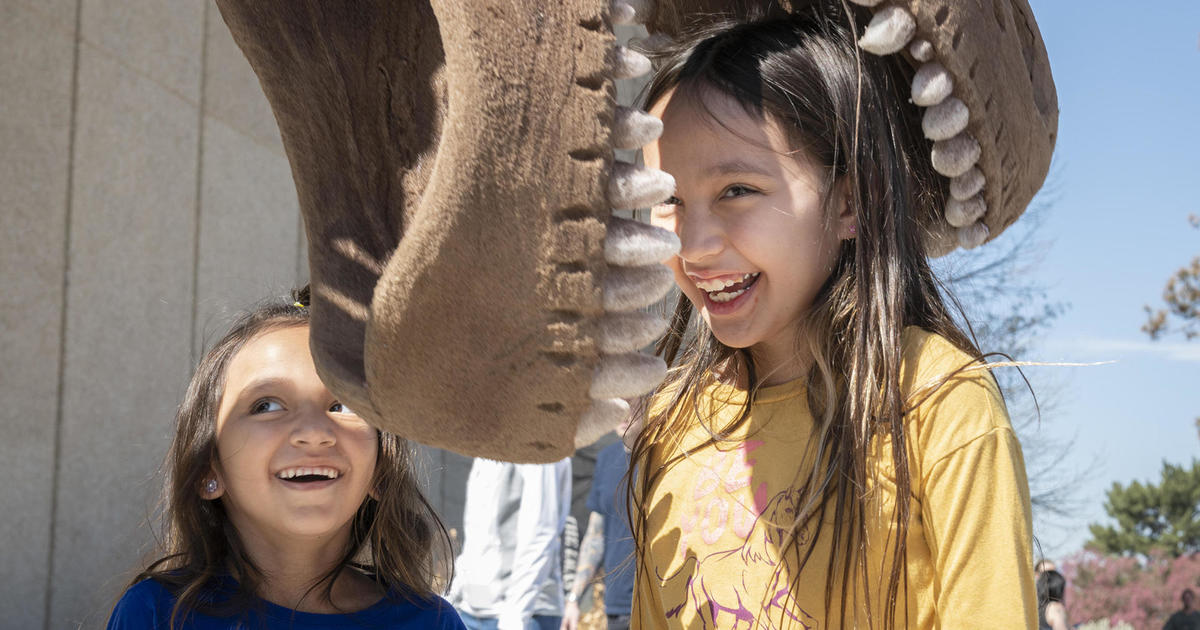Clouded Leopard Cubs On Display For Denver Zoo Visitors
DENVER (CBS4)- Visitors to the Denver Zoo can see the two newborn clouded leopard cubs. The two are located inside the El Pomar Foundation Village Hall within the Toyota Elephant Passage exhibit.
The male and female cubs, Pi and Rhu, were born on March 14. Unfortunately their inexperienced mother was not able to care for them so they are being raised by staff around the clock.
They began their lives in an incubator, but have graduated to a "whelping box" inside the Marynelle Philpott Fishing Cat Lagoon. The box provides the cubs with a safe place to learn to walk, crawl, wrestle, and play until they have grown enough to have full access to the exhibit.
Visitors can see them now daily from 11 a.m. to 4 p.m., except when they are taken behind the scenes by zookeepers for regularly scheduled feedings.
As they were born on March 14, Pi was named after Pi Day, the date observed to celebrate the mathematical constant, Pi. The date is also Albert Einstein's birthday. Rhu was named after his favorite dessert, rhubarb pie.
The cubs are the first births for their mother, Lisu and father, Taji. Lisu was born at Nashville Zoo in March 2011 and came to Denver Zoo that following November. Taji was born at Tacoma, Washington's Point Defiance Zoo in June 2011 and also arrived that November.
The two were paired under recommendation of the Association of Zoos and Aquariums (AZA) Species Survival Plan (SSP) which ensures healthy populations and genetic diversity among zoo animals. Fortunately, the couple has proved to be an excellent match.
As Lisu was unable to take care of them very early on, the cubs never developed a strong bond with their mother, nor she with them. Zookeepers do feel that it is important for these cubs to be exposed to adult clouded leopards as soon as they are older, though so as soon as zookeepers feel it is safe, they will move them to the clouded leopard building, where their parents are housed. Their parents probably won't recognize them as their offspring, but the cubs can develop some valuable behavioral information by seeing adult clouded leopards interact and vocalize.
Despite their name, clouded leopards are not actually a species of leopard. Because they are so unique they are placed in their own genus, Neofelis, which is a combination of Greek and Latin words meaning "new cat." They are considered a "bridge" between typical big cats, like lions and tigers, and the small cats, like pumas, lynx and ocelots. Their body lengths can range from about two to almost four feet long and they can weigh between 24 and 50 pounds. Their tawny coats with distinctive "cloud-shaped" dark blotches provide excellent camouflage in their forest habitat, enabling them to stalk prey and also hide from potential predators.
Clouded leopards are well adapted for living in the trees. Their short, flexible legs, large feet and sharp, retractable claws make them adept in the trees. They can descend head first down tree trunks, move along branches while hanging upside down and even hang from branches using only their hind feet enabling them to drop down and ambush prey on the ground. Their long tails provides balance as they leap from branch to branch. Their arboreal lifestyle also provides protection from larger predators like tigers and leopards.
They are found in Southeast Asia in southern China, parts of Nepal, India, Burma and from Indochina to Sumatra and Borneo and live primarily in tropical and subtropical evergreen forests up to 6500 feet above sea level.
There are no reliable estimates for clouded leopard populations in the wild, but their numbers are thought to be in decline and the International Union for Conservation of Nature (IUCN) classifies them as "vulnerable." Clouded leopards are endangered primarily due to habitat loss due to deforestation for agriculture. They are also hunted for their beautiful pelts and their bones, claws and teeth are used in traditional Asian medicine.
Denver Zoo has supported field conservation projects for the species in Malaysia, working to understand their current population size and threats to the species. Additionally, Denver Zoo staff members have traveled to Thailand as part of multi-zoo effort to breed clouded leopards there with the goal of supporting zoo populations and possibly reintroducing them to the wild.
Clouded leopards returned as a species to Denver Zoo in 2011 after a four year absence partly through a generous donation from David and Carla Crane in honor of David's mother, Peggy Crane Epand. Guests can see the Zoo's older clouded leopards under the Betty Robertson Leopard View, a shade structure outside the exhibit.
LINK: denverzoo.org






